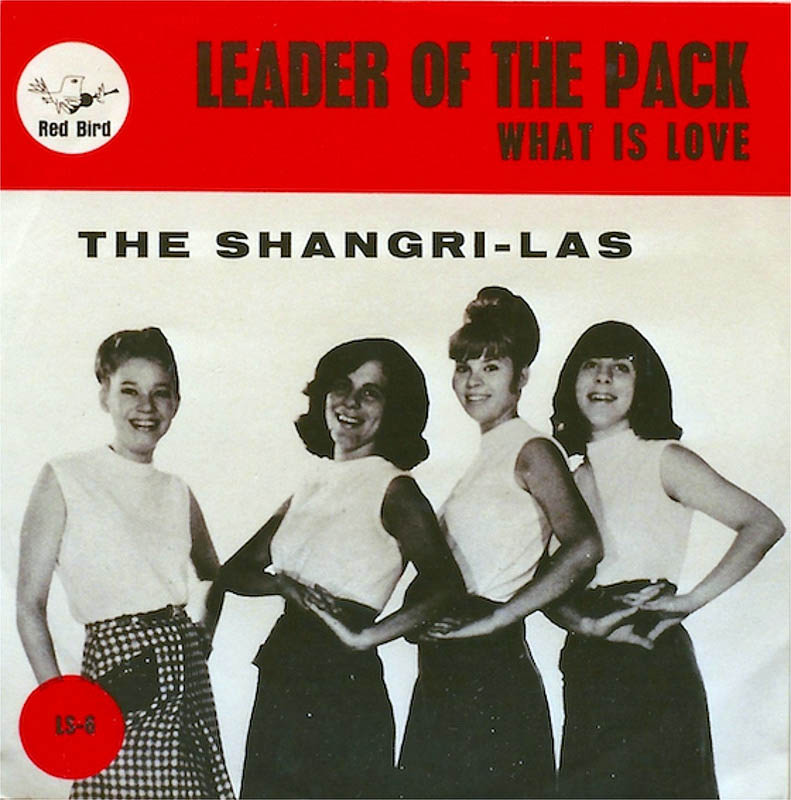In The Number Ones, I'm reviewing every single #1 single in the history of the Billboard Hot 100, starting with the chart's beginning, in 1958, and working my way up into the present.
The Shangri-Las - "Leader Of The Pack"
HIT #1: November 28, 1964
STAYED AT #1: 1 week
So many of the best pop records of the late '50s and early '60s were really teenage melodramas -- pocket operas with archetypal characters and tragic endings. And "Leader Of The Pack" takes that even further. It's a tiny little radio play, complete with revving engines and breaking glass. Mary Weiss, the Shangri-Las' lead singer, tells the whole story as a flashback, the other members of the group egging her on. And so she doesn't just sing the melody. She doesn't even just convey the emotions. She acts. Everyone and everything involved in the song acts, right down to that engine noise, something that may or may not have been accomplished by dragging an actual motorcycle into the studio.
The Shangri-Las were two sets of sisters, all of them high school students from Queens. In public, they adapted a tough-chick pose, and it wasn't just a pose; Mary Weiss infamously brought a gun with her on tour. They started out singing at talent shows and record hops and released a couple of early singles, but then they signed with Red Bird and went to work with George "Shadow" Morton, an eccentric pop genius who pushed Phil Spector's orchestrations even further, and who wore a cape in the studio.
Morton and the Shangri-Las struck gold early, with the soft-focus lost-love tragedy "Remember (Walkin' In The Sand)," a song that abruptly switched up melodies and time signatures to reflect what's going on in Weiss' narrator's head. "Leader Of The Pack" goes further, with both the sonic weirdness and the narrative ridiculousness. It really is a truly silly song. Morton co-wrote it with Jeff Barry and Ellie Greenwich, and it tells the story of a girl who, assenting to her father's demands, dumps her rebel boyfriend. The boyfriend goes roaring off on his motorcycle, and then he crashes and dies -- an ending so extreme and melodramatic that even the kid from "Teen Angel" would've been left shaking his head.
Were kids crying over "Leader Of The Pack"? I don't know. Maybe? Weiss does sell the song, taking it from chaste flirtation -- "I met him at the candy store" -- to genuine heartbreak. She finds depth in it, both in the song and in the boy: "They told me that he was bad / But I knew he was sad." Later on, she does her best at conveying what it's like to grieve. "In school, they all stop and stare / I can't hide the tears, but I don't care," she laments, putting real force into it. But then the song is so truly goofy that I have a hard time imagining anyone, even the kids of 1964, taking it too seriously. It's the transcendent little backing-vocal parts that do it -- the "yes, we see" in those opening moments, the "Look out! Look out! Look out!" as the bike is crashing.
And the song itself is just gorgeous -- those heartbeat drums, that echoing piano, the way the voices wind through each other on the funereal outro. It's a beautifully ridiculous little masterpiece of pop music and a gothic melodrama for the ages.
GRADE: 10/10
BONUS BEATS: Here's the Damned's vastly important 1977 single "New Rose," which opens with a "Leader Of The Pack" paraphrase:
https://youtube.com/watch?v=91rAHIb8BwY
BONUS BONUS BEATS: Here's Twisted Sister's perfectly ridiculous video for their gender-flipped "Leader Of The Pack" cover, which made it to #53 in 1985:






